This 1936 Cord 810 phaeton is said to have passed through a series of documented owners dating back to the 1940s before being purchased in 1988 by a collector who initiated a refurbishment in the 1990s. The car subsequently earned AACA National Senior First Prize and CCCA Senior Premier honors before being sold to a Florida owner and again changing hands in 2008. An additional refurbishment performed over the ensuing several years included a repaint and a re-trim of the interior in red leather before the car was purchased by the selling dealer approximately five months ago. Power is provided by a 289ci Lycoming V8 that drives the front wheels via a vacuum-operated four-speed preselector transaxle. Additional features include independent front suspension, a Gener-Nator alternator, a Startix automatic starting system, mechanically operated pop-up headlights, a black convertible top, and a radio. This 810 is said to have participated in CCCA CARavans as well as the Glidden Tour and is now offered in Benson, North Carolina, with ACD Club certification, owner’s manuals, a brochure, awards, invoices dating back to 2009, and transferable New York registration.
The Cord 810 was introduced in late 1935 for the 1936 model year and returned for 1937 as the 812 before the Auburn Automobile Company ceased manufacture of the Cord marque. Gordon Buehrig-penned styling included a “coffin-nose” front profile with a louvered wraparound grille, a rear-hinged hood, hideaway headlights raised via dash-mounted hand cranks, concealed door hinges, and a split windshield.
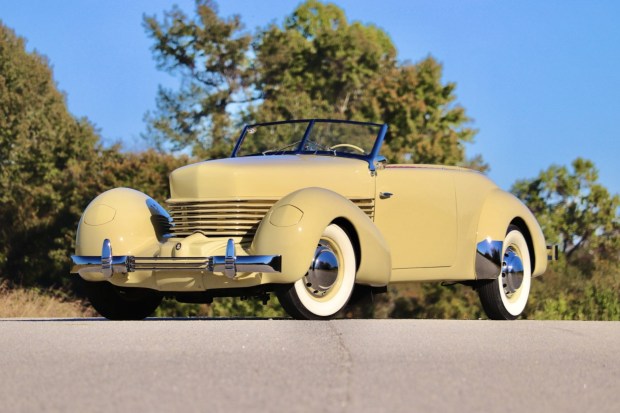
This example is said to have been refinished during the refurbishment performed between 2009 and approximately 2017, which also included re-plating of the brightwork. A black Stayfast convertible top was also installed during the project.
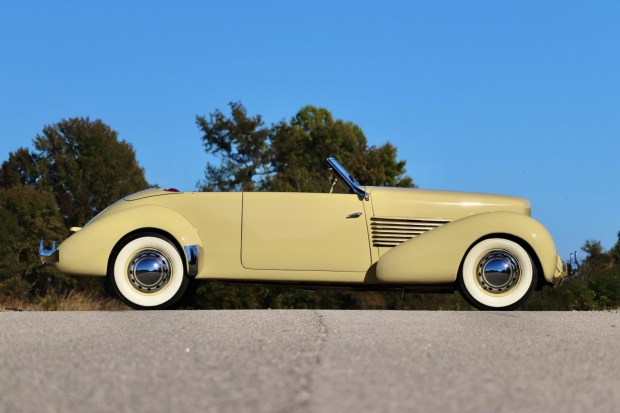
Body-color steel wheels wear chromed covers and are wrapped in 6.50-16 Lester wide-whitewall tires. Stopping is handled by four-wheel hydraulic drum brakes, while suspension incorporates a trailing-arm independent front setup with a transverse leaf spring and a solid rear axle with semi-elliptical leaf springs.
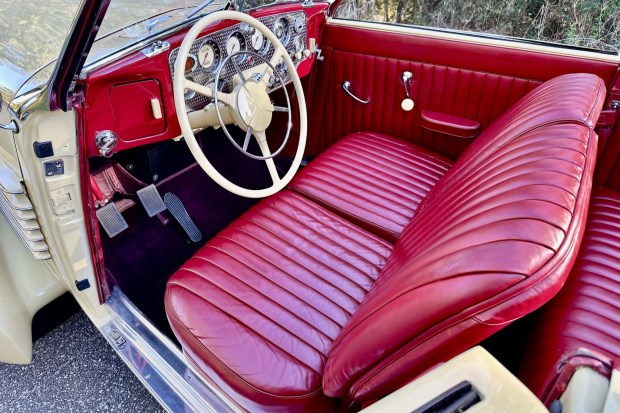
The cabin is trimmed in red leather over two rows of seating as well as over the door panels and rear side panels. Additional interior features include maroon carpeting, roll-up side windows, retractable rear quarter windows, dual gloveboxes, a heater, and a rotary-dial radio.
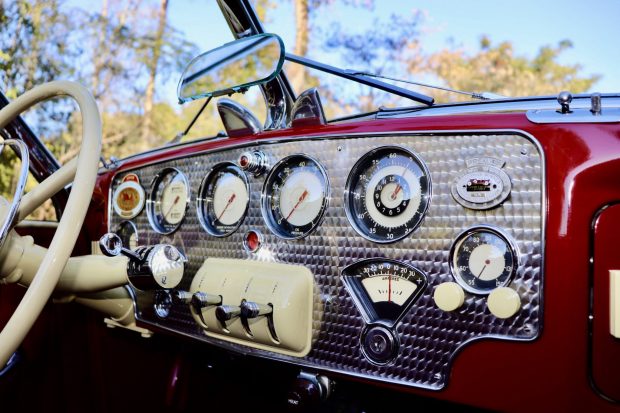
The three-spoke steering wheel shares its column with a Bendix “electric hand” gear selector at the driver’s right and sits ahead of a red-painted dashboard. A machine-turned dash fascia houses a 120-mph speedometer, a 5k-rpm tachometer, a clock, and gauges monitoring coolant temperature, fuel level, oil pressure, and amperage. The five-digit odometer shows 39k miles, approximately 50 of which have been added under current ownership. ACAA and CCCA senior award badges are affixed on either side of the dash fascia.
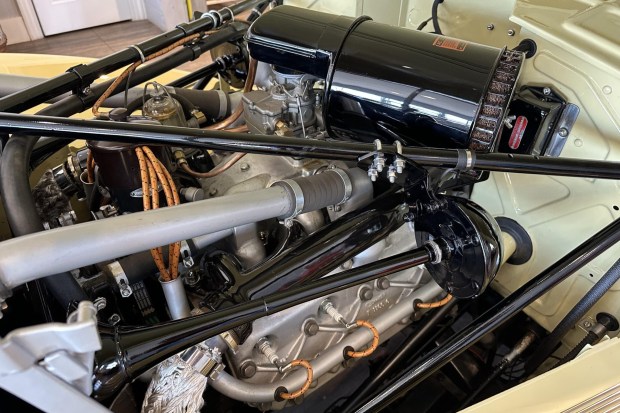
The naturally aspirated 289ci Lycoming V8 features three main bearings, aluminum cylinder heads, side valves angled at a near-horizontal position, and a single Stromberg downdraft carburetor. The engine is equipped with a Startix automatic starting system and was fitted with a Gener-Nator alternator during the 2010s refurbishment.
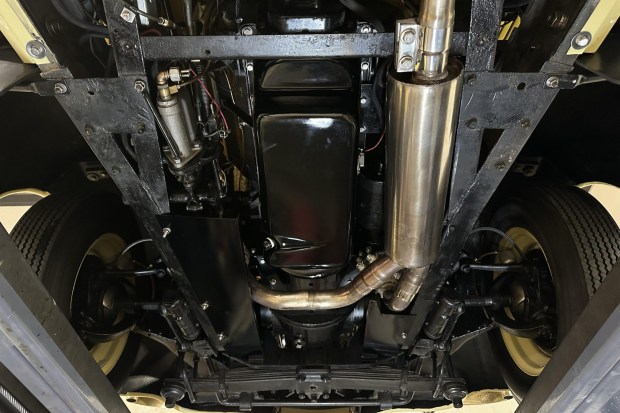
Power is transferred to the front wheels by a Detroit Gear four-speed transaxle mounted ahead of the engine. Gear changes are preselected via the column-mounted electrical switch and are set into action when the depression of the clutch pedal completes the electrical circuit that actuates vacuum cylinders on the transaxle unit. The transaxle was reportedly rebuilt by specialist Lee Foldenauer in the 1990s.
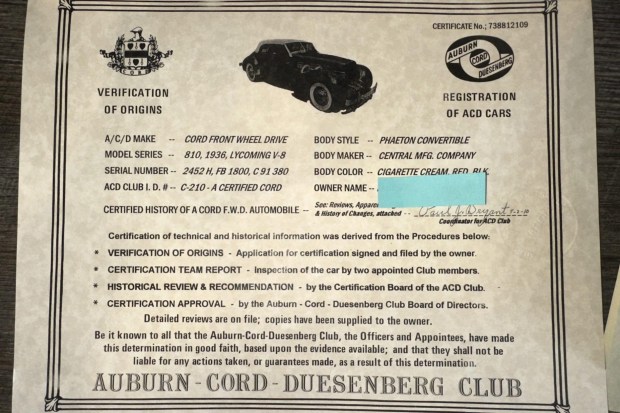
The ACD Club certificate is dated September 2010, and an additional certificate dated 2009 is viewable in the photo gallery below.
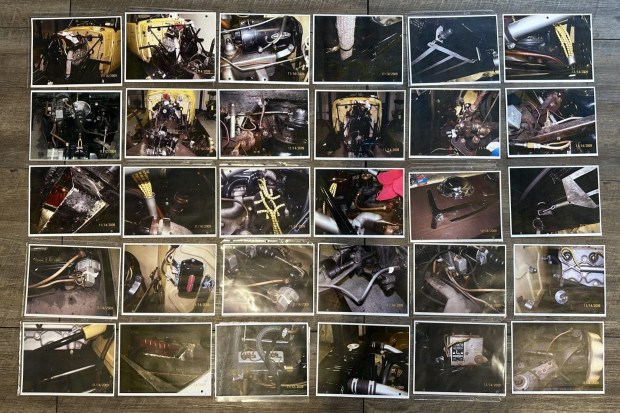
Photos from refurbishment work in 2009 and 2010 are included in the sale along with invoices and additional documents from that span.
The car does not have a title, as it is registered in a state that does not issue titles for a vehicle of its age. It is being sold on its registration, which is expired.
You are not connected to real-time updates. Attempting to connect.
Your real-time updates could not be connected. Missed updates will be sent once your connection has been reestablished.
Your real-time updates could not be connected. Missed updates will be sent once your connection has been reestablished.
Your real-time updates could not be connected. Missed updates will be sent once your connection has been reestablished.

